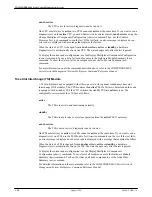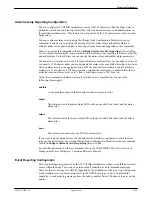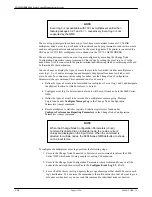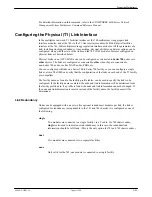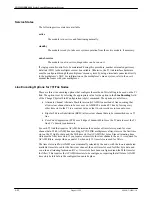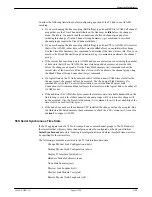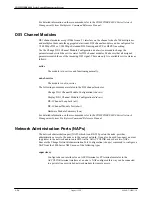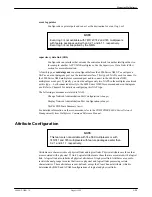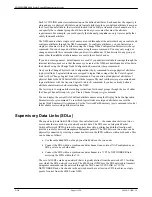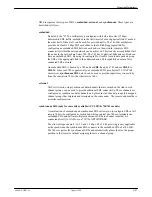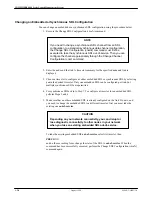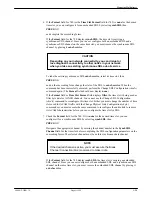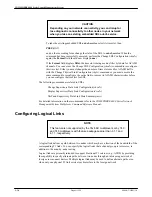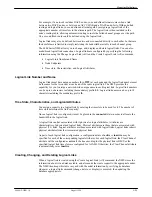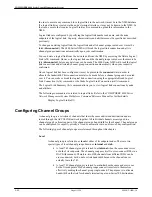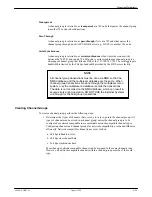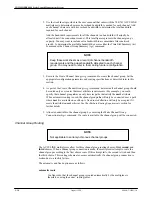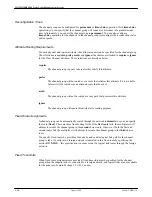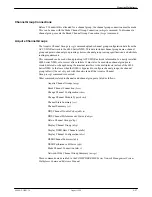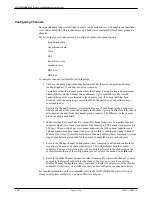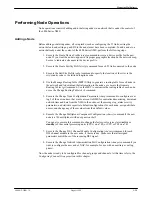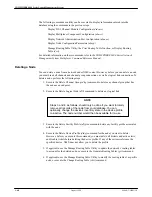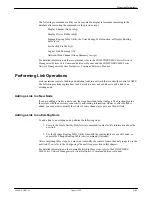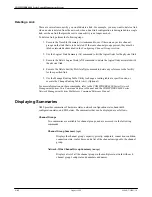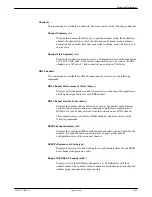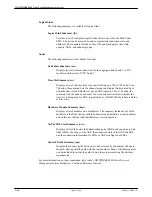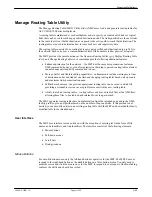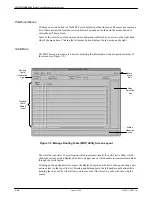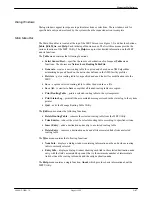
COMSPHERE 6800 Series Nework Management System
1-32
August 1994
6800-A2-GB21-10
In order to execute any command for a logical link in the network, it must be in the NMS database.
If a logical link was created via the node’s terminal interface, it may not be known to the NMS. In
that case, execute the Acquire Logical Link (acll) command to upload this information to the
NMS.
Logical links are configured by specifying the logical link number and name, and the node
endpoints of the logical link. Capacity, characteristics and attributes must be specified as described
previously.
To change an existing logical link, the logical link and all channel groups routed over it must be
idled (disconnected). The 6800 Series NMS will break the logical link connection and all its
channel group connections automatically upon your confirmation.
You can delete a logical link from the network and from the NMS by executing the Delete Logical
Link (dlll) command. However, the logical links and the channel groups routed over them must be
idle (disconnected) before any deletions can be made. The 6800 Series NMS will break the logical
link connections and all related channel group connections automatically when your request is
confirmed.
Once a logical link has been configured, it must be placed in the connected state in order to
allocate the bandwidth. This connection must also be made before a channel group can be routed
over it. You can make or break the logical link connection using the appropriate Break Logical
Link Connection (brllc) command or the Make Logical Link Connection (mkllc) command.
The Logical Link Summary (lls) command allows you to view logical link connections by node
and attribute.
The following command is also related to logical links. Refer to the COMSPHERE 6800 Series
Network Management System Multiplexer Command Reference Manual for further details.
Display Logical Link (dsll)
Configuring Channel Groups
A channel group is a selection of channels that share the same end-to-end destination and are
routed through the ACCULINK network together. All individual channels are assigned to a
channel group by allocating part of the channel group’s bandwidth for the channel. Channel groups
can be configured for capacity, priority, a fixed or automatic route, and time-of-day configuration.
The following types of channel groups are referenced throughout this chapter.
Local
A channel group is referred to as local at either of its endpoint nodes. There are two
special types of local channel groups known as internal and stub.
•
A local 745 channel group is referred to as internal when the same node serves
as both of its endpoints. The channel group uses itself to cross-connect DS0s in a
DACS-like manner. Therefore, two DS0 channels from different DS1s can be
cross-connected, but do not use link bandwidth because the channels never
actually leave the 745.
•
A local 740 channel group is referred to as stub when the same node serves as
both of its endpoints. Stub channel groups connect time slots to themselves
effectively making the channel group single-ended. The purpose is to allocate
bandwidth on the link for channels terminating at non-Series 700 destinations.

